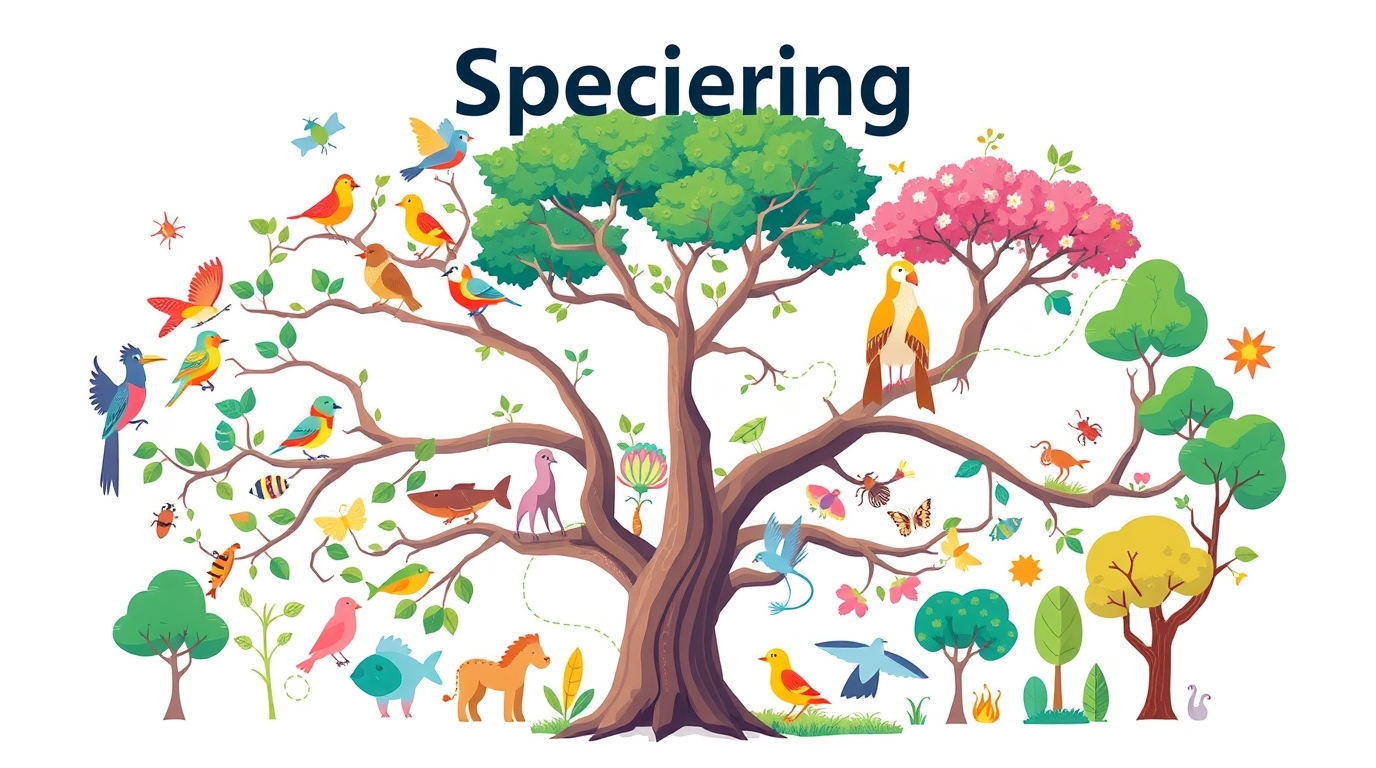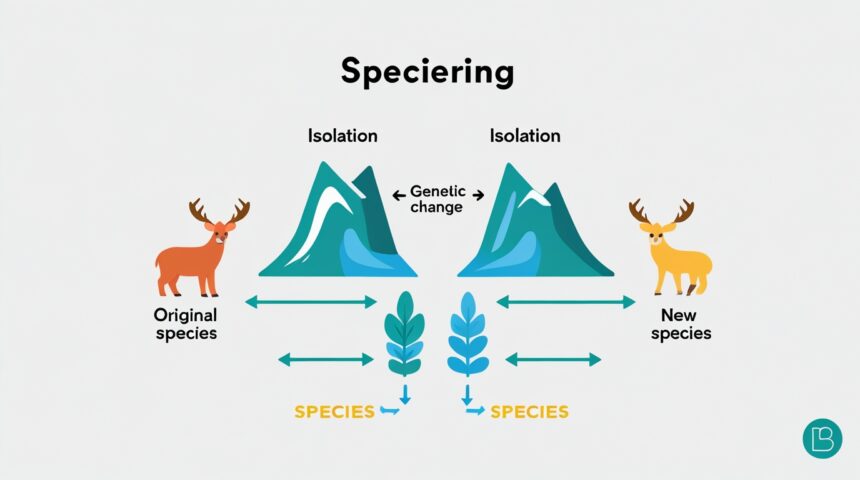Speciering, often referred to as the process of species formation, is one of the most fascinating topics in biology. It explains how new species emerge from existing ones over time. For students, understanding speciering not only helps in science classes but also gives deeper insight into how life on Earth has evolved. From the birds in your backyard to the fish in the ocean, every living organism is part of this ongoing process. While the word may sound complicated at first, breaking it down into simple steps makes it much easier to grasp.
In this guide, we’ll explore the meaning of speciering, how it works, the main types, real-life examples, and why it matters. Whether you’re preparing for a biology exam, writing a school report, or just curious about nature, this article will give you a clear and student-friendly explanation.
What Does Speciering Mean?
Speciering is the biological process through which populations of the same species gradually split into separate species. This usually happens when groups of organisms become isolated, adapt to different environments, or change genetically over long periods. The term comes from “species” and “-ing,” which indicates the ongoing creation of new species.
Think of speciering as a branching tree: the trunk represents the original species, while the branches represent new species that form as time passes. Scientists study speciering to understand biodiversity, the history of life, and the mechanisms behind evolution.

Simple Speciering Diagram (ASCII Concept)
Why Is Speciering Important in Biology?
Speciering is at the heart of evolutionary biology because it explains how life diversifies. Without speciering, Earth would only have a few types of organisms instead of the millions of species we see today. This process drives adaptation, survival, and the balance of ecosystems.
For students, speciering connects many topics you already learn in class, including natural selection, genetics, and ecosystems. It also highlights why protecting biodiversity matters—because when species disappear, we lose entire branches of nature’s evolutionary tree.
The Role of Isolation in Speciering
Isolation is one of the most important factors in speciering. When groups of the same species are separated—by geography, climate, or behavior—they no longer interbreed. Over time, genetic differences build up, and the groups evolve into distinct species.
For example, a river forming between two populations of insects can prevent them from mixing. Over generations, the two groups adapt differently to their environments. Eventually, they may become so different that they can no longer reproduce with each other, marking the creation of two separate species.
The Main Types of Speciering
Biologists classify speciering into several types, each depending on how populations become separated:
Allopatric Speciering
This occurs when populations are divided by physical barriers such as mountains, rivers, or oceans. It is the most common type of speciering. An example is the formation of new fish species when lakes or rivers split.
Sympatric Speciering
In this case, speciering happens without a physical barrier. Instead, genetic changes, feeding habits, or mating preferences cause populations to separate while living in the same area. For instance, certain insects may adapt to different host plants and stop interbreeding with others.
Parapatric Speciering
Here, populations are partially separated by geography. They live in neighboring areas but interact less often. Over time, limited mixing and environmental differences encourage speciering.
Peripatric Speciering
This is a special form of allopatric speciering, where a small population becomes isolated at the edge of a larger one. Because the smaller group has less genetic variation, changes happen more quickly, leading to rapid speciation.
Examples of Speciering in Nature
Real-world examples help students understand speciering in action. One famous case is Darwin’s finches in the Galápagos Islands. Each finch species developed different beak shapes to adapt to different food sources, illustrating adaptive radiation.
Another example is cichlid fish in African lakes. Hundreds of species evolved from common ancestors due to variations in diet, color, and habitat. These cases show how environmental pressure, natural selection, and isolation work together in speciering.
Speciering and Natural Selection
Natural selection plays a central role in speciering. When environments change, organisms with favorable traits survive and reproduce, passing on their genes. Over generations, these changes accumulate, leading to populations that are genetically distinct.
Imagine a population of butterflies where some blend better with their surroundings than others. The camouflaged butterflies survive predators more often and pass their traits to offspring. If the process continues long enough, the population could evolve into a new species, demonstrating speciering in action.
The Genetic Side of Speciering
At the genetic level, speciering happens because of mutations, genetic drift, and recombination. Mutations introduce new traits, while genetic drift can cause random changes in smaller populations. Over time, these genetic shifts create barriers that prevent interbreeding.
For students, the key takeaway is that speciering is not a sudden event but a gradual accumulation of changes. Modern genetic studies allow scientists to trace DNA differences and confirm when populations have split into separate species.
Human Influence on Speciering
While speciering has occurred naturally for millions of years, human activities now affect it in powerful ways. Deforestation, climate change, and pollution alter habitats, sometimes speeding up speciering or, unfortunately, causing extinction instead. On the other hand, conservation programs aim to protect species and maintain biodiversity.
For example, urban environments have led to unique populations of birds and insects adapting to city life. These adaptations may eventually lead to new species, showing how humans are indirectly shaping evolution.
Why Students Should Learn About Speciering
For students in the U.S., speciering is more than a classroom concept—it’s a way to connect science to the real world. Understanding how species form encourages critical thinking about conservation, climate change, and even medical research.
Speciering also shows how interconnected life is. By studying how species adapt and evolve, students gain appreciation for the delicate balance of ecosystems and the importance of protecting our planet’s biodiversity.
How Teachers Can Make Speciering Easier to Learn
Educators can use hands-on examples to make speciering engaging. Classroom activities like observing different plant species, using digital simulations, or discussing case studies such as Darwin’s finches can bring the concept to life. Visual aids, such as tree diagrams of evolution, also help students see how speciering works.
By breaking down the scientific language and using real-world examples, teachers can make the subject both accessible and inspiring.
Final Thoughts
Speciering may sound like a complex scientific term, but at its core, it simply describes how new species form. From isolation and natural selection to genetics and environmental pressure, the process shapes the incredible diversity of life around us. For students, learning about speciering is not only essential for biology but also provides a window into understanding Earth’s past, present, and future.
The next time you see different bird species in your neighborhood or read about newly discovered animals, remember that speciering is the reason for their existence. It’s a reminder that evolution is ongoing, and life continues to adapt in remarkable ways.
Frequently Asked Questions (FAQs)
1. What is speciering in simple terms?
Speciering is the process by which one species splits into two or more new species. It happens when populations become isolated, adapt differently, and eventually can no longer reproduce together.
2. How long does speciering take?
Speciering usually takes thousands to millions of years. However, in some cases—such as small isolated populations—it can happen more quickly due to genetic changes and environmental pressures.
3. Can humans cause speciering?
Yes. Human activities like building cities, changing habitats, and influencing climate can indirectly cause populations of animals or plants to adapt differently. Over time, this can lead to the formation of new species.
4. What’s the difference between speciering and evolution?
Evolution refers to the broader process of change in living organisms over time. Speciering is a specific outcome of evolution, where new species arise from existing ones.
5. Why should students study speciering?
Learning about speciering helps students understand biodiversity, conservation, and evolution. It also encourages critical thinking about how human actions impact ecosystems and the future of life on Earth.
FOR MORE : FLIPPAMAGAZINE












